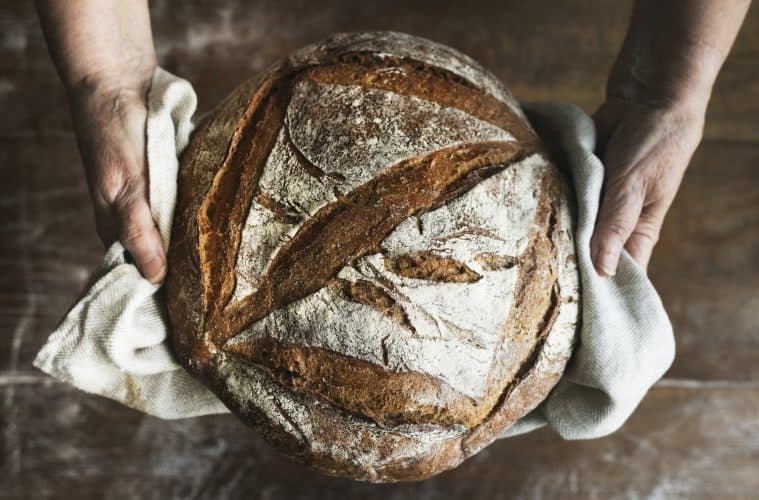You’re ready to make your own sourdough bread from starter and you don’t know where to start. It can be a little confusing, but we want to help! We have everything you need in one place, so read on for our step-by-step guide.
Sourdough is an ancient method of making bread that has been around since the beginning of time. It’s made with just flour, water and salt – no yeast or other additives needed! Once you get started, it will become second nature and before long you won’t believe how easy it is. You’ll never buy store bought again!
Sourdough bread is a type of white, European bread made from wheat flour and fermented with naturally-occurring yeast and lactobacilli. It has a slightly tangy or sour taste caused by the lactic acid produced by the lactobacilli during fermentation. Sourdough bread is good for you because it can reduce phytate content in foods , which would otherwise block mineral absorption, so sourdough consumption may help prevent nutrient deficiencies.
Sourdough bread is made by creating a starter, a mixture of flour and water that contains the natural yeast and lactobacilli that will ferment the bread. The starter can be created from scratch using flour and water, or it can be saved from an earlier batch of sourdough bread.
Creating Sourdough Bread Starter
Combine 30 grams of all-purpose flour with 30 ml of room temperature water in a bowl.
Add 1 gram of sourdough culture and stir until the flour is fully hydrated and there are no dry patches.
Cover the bowl with plastic wrap and let it sit at room temperature for 12-24 hours.
The starter will start to bubble and develop a sour smell when it’s ready.
Once you have your starter, it’s time to make the bread!
To make bread, combine 1 cup of sourdough starter with 1 1/2 cups of water and 2 1/2 cups of all-purpose flour in a large bowl.
Add 3 tablespoons of salt, if desired.
Mix with your hands or at low speed until all of the ingredients are fully incorporated, about 5 minutes. The dough should be slightly tacky to the touch but not very sticky.
Cover the bowl with plastic wrap and let it ferment for 12-15 hours at room temperature. After this time has passed, preheat your oven to 450°F/230°C.
Create a proofing basket by lining a colander with moistened cheesecloth and dusting it generously with flour, rice flour, semolina flour, or all-purpose flour (not whole wheat).
Using wet hands, transfer the dough from the bowl to the colander. Loosely fold up one edge of the cheesecloth and use a rubber band to secure it around the rim of the colander. Let proof for 1-4 hours.
After proofing, transfer the dough from the colander to a sheet pan lined with parchment paper or a silicone baking mat. Score (slash) the loaf diagonally twice across its width with a sharp knife or razor blade.
Bake at 450°F/230°C for 30 minutes, rotating 180 degrees when the bread is half-way baked, about 15 minutes into baking time.
Reduce heat to 400°F/204°C and continue baking until an instant read thermometer inserted into the center reads 210°F/99°C, about 10-15 more minutes.
Transfer the bread to a cooling rack and let cool for at least 1 hour before serving.
This is how you make sourdough bread!
Sourdough bread is good for you because it can reduce phytate content in foods, which would otherwise block mineral absorption, so sourdough consumption may help prevent nutrient deficiencies.
Foods that pair well with sourdough are foods that also have natural yeast, such as meats like roast beef or turkey, vegetables like caramelized onions, cheeses like brie or gouda, and jams like strawberry or raspberry.
Enjoy!

